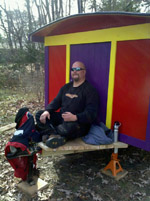Im a little curious about moving up to 13" rims, but not sure if it would be too close and they would rub. Do they sell anything that would attach to the hub that would be able to move the rim and tire a little further out? on one side I might have about an inch, the other side has a lil more space.
thanks
deryk
Hubs
10 posts
• Page 1 of 1
Hubs
Build Thread lil vardo 1: http://tinyurl.com/baqe6py
Build Thread lil vardo 2: http://tinyurl.com/b3rwffm
Build Thread lil vardo 2: http://tinyurl.com/b3rwffm
-

Deryk the Pirate - 500 Club
- Posts: 809
- Images: 158
- Joined: Tue Aug 18, 2009 11:03 am
- Location: Parlin NJ
Re: Hubs
Not sure if it will work for you... but, there are a number of sites that sell wheel spacers, adapters, etc. Check out http://www.motorcitybolton.com/ and/or just google for wheel spacers, adapters, etc.
-Michael
"all things should be as simple as possible... but no simpler"
"all things should be as simple as possible... but no simpler"
- michaelwpayton
- Teardrop Master
- Posts: 192
- Images: 4
- Joined: Thu Jun 24, 2010 7:41 pm
- Location: Williamsburg, VA
